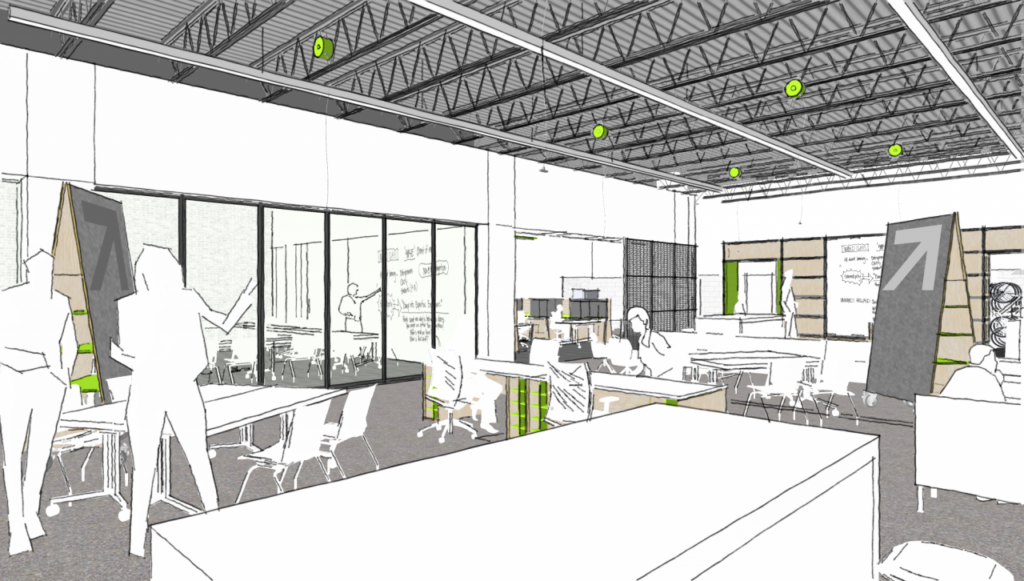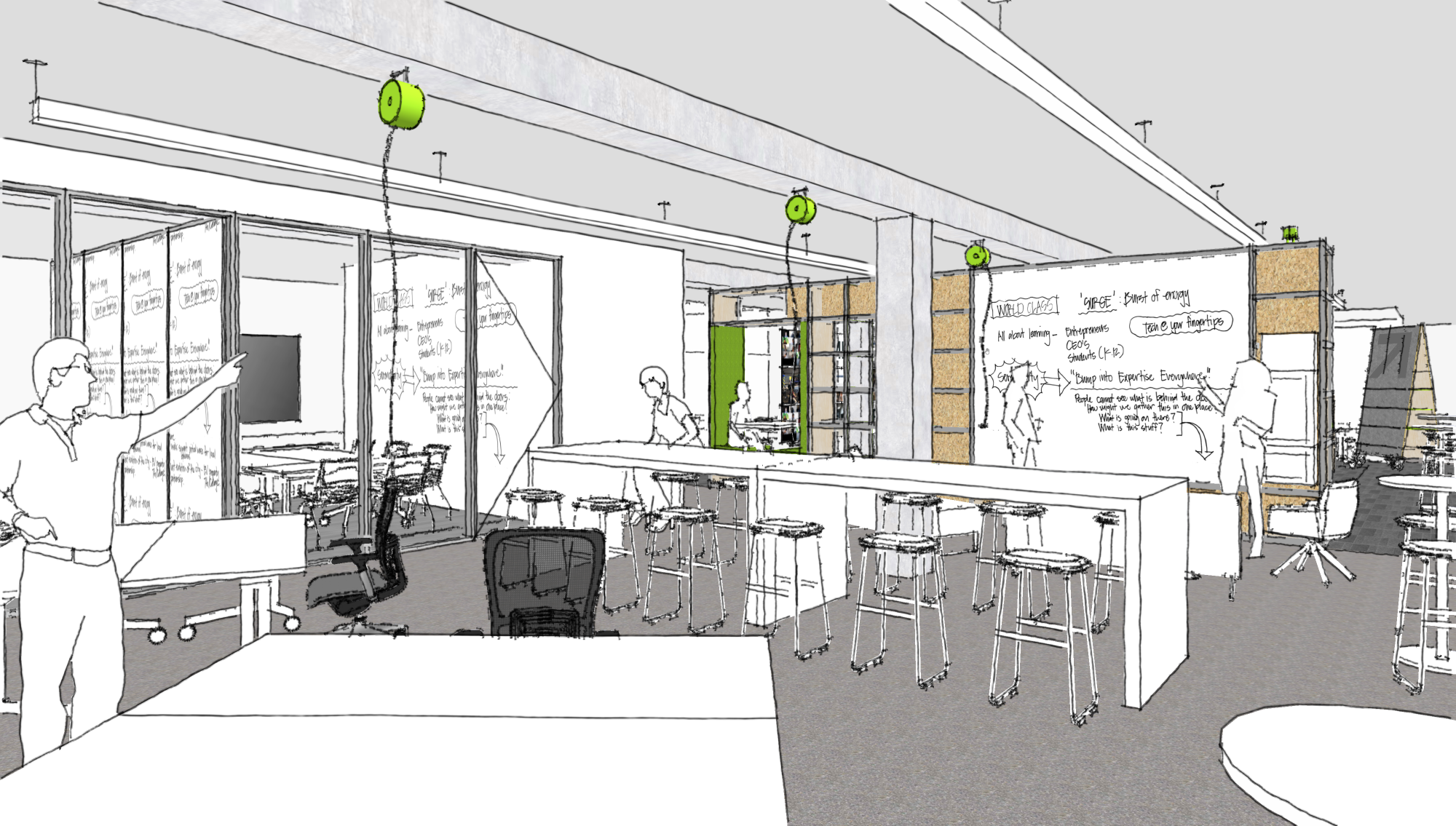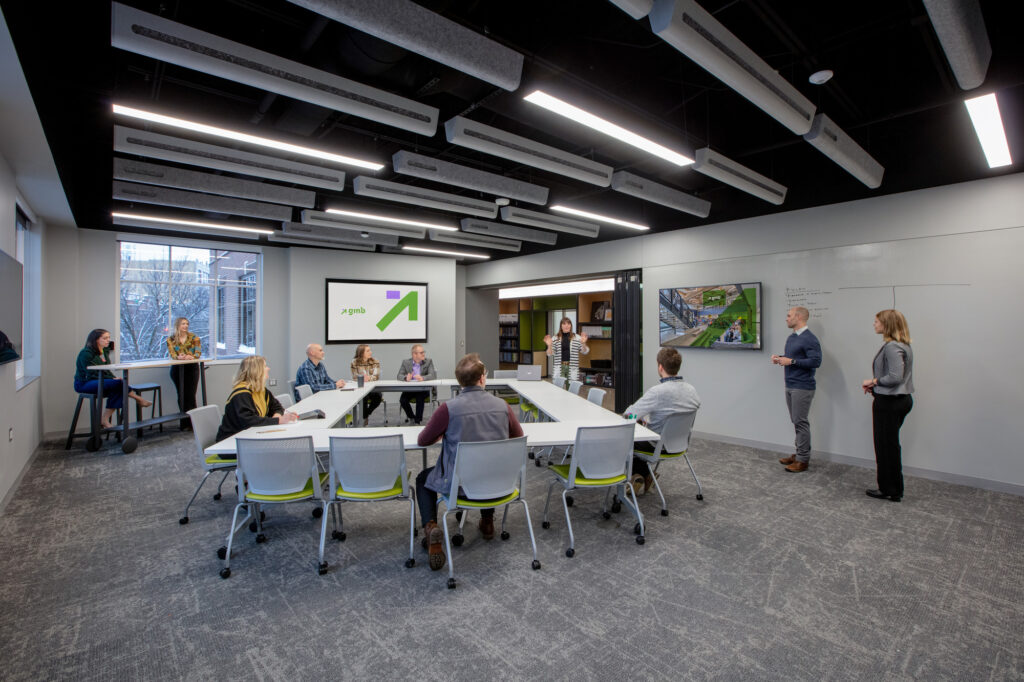As an evolution toward our just cause of creating learning ecosystems and opportunity for all in our communities, GMB Architecture + Engineering is transforming our office spaces into Learning Hubs.
Just as in the world of education, the ways that people learn and collaborate in the workplace have also changed. As we have grown our teams and transitioned to a flexible workplace, we wanted to create an exciting experiential place for both our clients and our employees that’s more than a place to do work, it’s a place to exchange knowledge, to learn together and from each other. To make that happen, we are in the process of transforming all of our office spaces into Learning Hubs.
What exactly is a “Learning Hub?” When we looked at how our teams were collaborating both virtually and in person, we asked ourselves what brings us together now. We decided to throw away all the old connotations of an office, and instead create a place that connotes the learning experience we’re providing.
Though the last couple years disrupted and changed everything, GMB was already an organization focused on constant change and growth, and we easily transitioned to remote work and collaboration. The way we all work and collaborate changed dramatically, and we had to ask ourselves, what does that mean? What were we missing by being forced remote? Now that we are digital by design and intentionally flexible, we realized we want the places where we come together – whether virtual or physical – to be part of the collaborative learning experience. Because there’s a new reason for us to gather, and it’s all about experiential learning.

As we do with every project, we began with a conversation about why people come together in these spaces, laying out the guiding principles for GMB’s Learning Hubs.
- A Learning Hub is a place where people come together for a common purpose, to develop relationships, and to learn by participation, observation, and listening.
- GMB’s hubs exist in service of learning and are designed to serve a variety of purposes for people within the educational ecosystem – whether employees, clients, or students.
- A hub can be in a physical or virtual location.
- Hubs are set up around our just cause, opportunity for all.
- There are no explicit or implicit advantages to working from a physical Learning Hub. All employees have the same opportunities regardless of where they are physically.
- We will keep our hubs feeling like modern and desirable places by refreshing them on a regular basis.

Our Learning Hubs provide a place for coaching, asking questions, experimenting with new ideas with our teammates and with our clients. By thinking beyond the surface-level changes many are talking about when it comes to office transformations, we’re doing so much more than just rearranging furniture or adding wi-fi. We’ve evolved from an organization that promotes chance mentoring into one that creates intentional opportunities for deeper connections and experiences, both internally and externally.
We want our client experience to be reflective of our own employee experience, to be inclusive of the community and clients we partner with. Which is why our Learning Hubs have both physical and digital opportunities for exchanging knowledge. The ways that people learn and collaborate today has changed and it’s the same in the workplace as it is in education. No longer are people learning by sitting in rows of desks facing one direction; we’re collaborating and doing project-based learning in groups and teams. There is a parallel to our own work. There is opportunity for us to connect our work in education design and planning to this new way of navigating work and learning.
The hub is a piece in the ecosystem network, providing a pivotal joint for connecting all the other components of the learning ecosystem we’re creating in our communities. Just like our Team of Teams structure, the hub is not THE thing, but an integral piece of the greater network.
…Which brings us back to making these places experiential.
Through empathy mapping as a team, we reimagined what our hubs could be and mapped out what elements already existed in our spaces, as well as what components were most important to our employees, our clients, and our communities.
Instead of the “put your head down” workstations taking precedence in our physical hubs, we’ve made the big experiential gathering areas the main focus. Those collaboration spaces can be multipurpose – group learning opportunities, community meetings, maker spaces, and more. There’s a real reason we get together to learn, because we’re a learning organization. And we want our clients and community coming into our spaces to feel that as well. Our Learning Hubs are becoming places where we can facilitate community interaction and connect to what students are already learning to be more intentional with how we’re also learning from them.
Our Learning Hubs can become community hubs with access to resources that become a conduit for dialogue, exchanging ideas, and fostering the sharing of knowledge in an experiential way that aligns with who we are as a learning organization. We were seeing this activity already happening in our spaces, so to align better with our just cause and what we’re trying to accomplish in the world, why not actually make our physical and digital spaces a real resource where we can work with our clients and communities to provide solutions and further our just cause?


The first of our newly imagined physical Learning Hubs will open this fall in Grand Rapids and Royal Oak, Michigan, and will feature multipurpose, experiential gathering areas where we can come together to learn. Our virtual client Learning Hub will also launch later this year. What we learn from these hub refreshes will inform how we approach future changes in our Holland, Michigan, and Indianapolis, Indiana, locations over the next two years.
Be sure to follow along on LinkedIn to see sneak peeks of our Learning Hubs transformation and get updates on upcoming events and learning opportunities.






